Overview
Proofpoint researchers first discovered DanaBot in May of 2018 [1], describing its use by a single actor targeting Australian organizations. As we predicted at the time, other threat actors targeting Europe and North America have since adopted the banking Trojan, increasing its footprint and taking advantage of its extensive anti-analysis features. In this blog we describe a campaign affecting organizations in the United States and present new reverse engineering analysis of DanaBot.
Recent DanaBot Campaigns
Our colleagues at ESET recently blogged about DanaBot campaigns and described the latest expansion of targeted countries to include Poland, Italy, Germany, and Austria [2]. We have also observed several campaigns since May targeting Australia. Finally, at the end of September, an actor that typically targets the United States with daily campaigns distributing the Panda banking Trojan switched to delivering DanaBot for a day.
Hancitor Campaign
On September 26, Proofpoint researchers observed a campaign with hundreds of thousands of email messages targeting US recipients. The emails used an eFax lure (Figure 1) and contained a URL linking to the download of a document containing malicious macros (Figure 2). The macros, if enabled by the user, executed the embedded Hancitor malware [3], which, in turn, received tasks to download two versions of Pony stealer and the DanaBot banking malware. You can find a more in-depth analysis of the recent macros used by this actor in a post written by 0verfl0w [4].
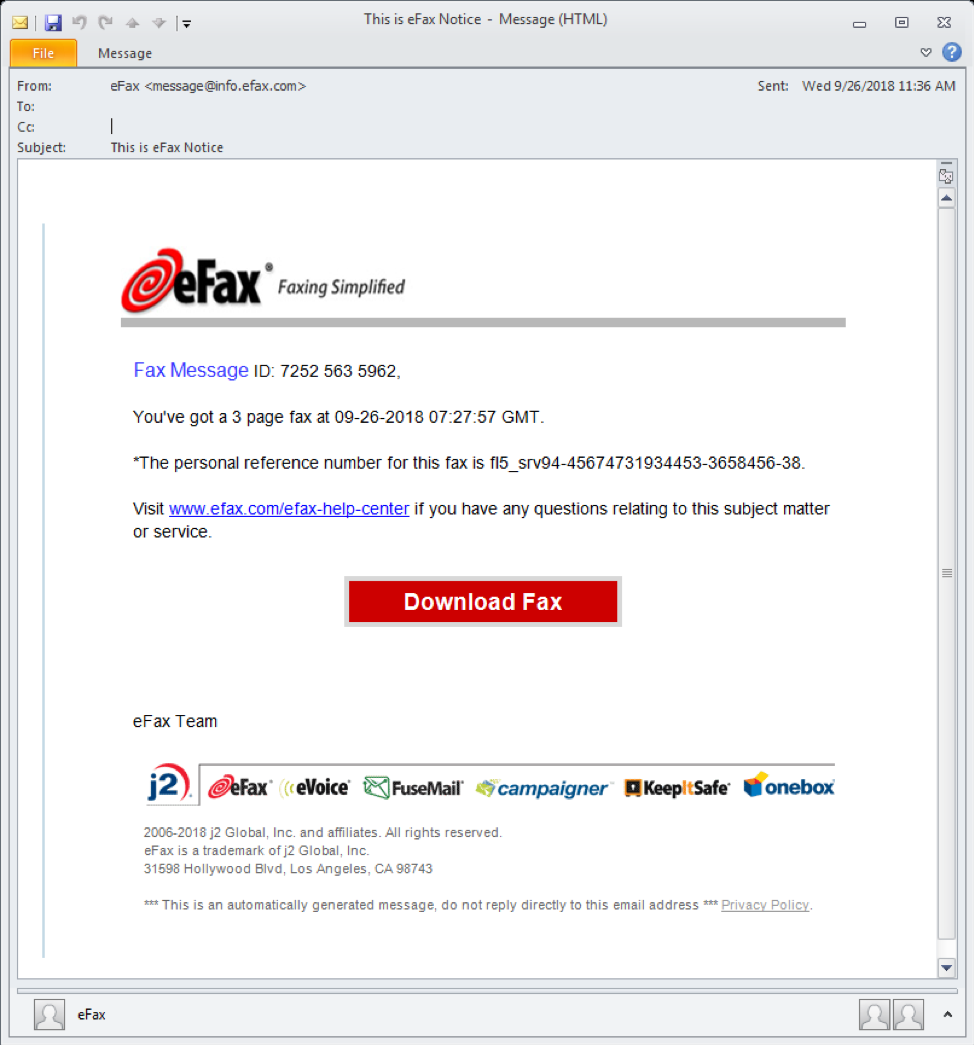
Figure 1: Message example with URLs linking to the download of a document containing macros that download the Hancitor payload
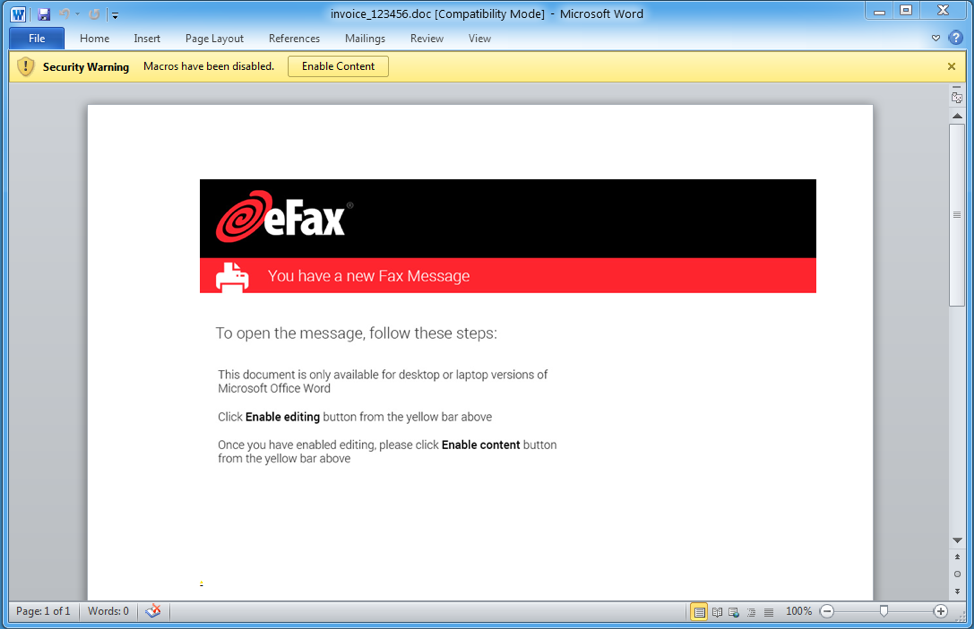
Figure 2: Macro document that contains the Hancitor payload
Malware Analysis (v2.003)
As previously described, DanaBot is a banking malware written in the Delphi programming language. This section continues our analysis of DanaBot by examining details of version 2.003. This is the latest version that we have seen in the wild, first appearing in early September. The version number is based on a version string (Figure 3) that is sometimes transmitted when the malware sends data to the command and control (C&C) server.
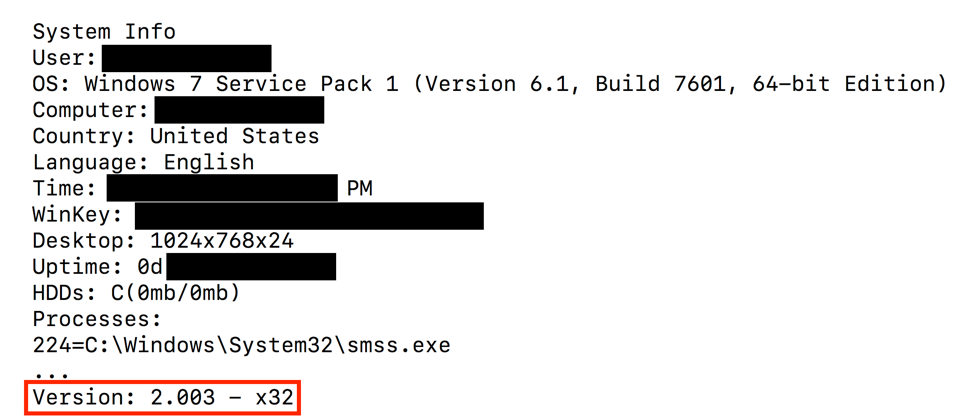
Figure 3: DanaBot’s version string being sent to the C&C server along with system information
DanaBot is composed of three components:
- Loader: downloads and loads main component
- Main component: downloads, configures, and loads modules
- Modules: various malware functionality
Anti-analysis
DanaBot includes a significant amount of junk code including extra instructions, conditional statements, and loops. When combined with the use of Delphi, these features dramatically impair reverse engineering. In addition, DanaBot uses Windows API function hashing and encrypted strings to prevent analysts and automated tools from easily determining the code’s purpose.
A version of the API hashing algorithm written in Python [7], a list of the resolved Windows API functions used in the loader [8] and the main component [9] are available on Github.
The characters of the encrypted strings are stored as an array of DWORDs and are decrypted using a key and a basic substitution cipher. An IDA Pro Python script [10] and a list of decrypted strings used in the loader [11] and the main [12] component are available on Github.
Command & Control IPs
In both the loader and main components there is a list of 10 C&C IP addresses stored as DWORDs. Figure 4 shows an example from a memory dump of a loader component:
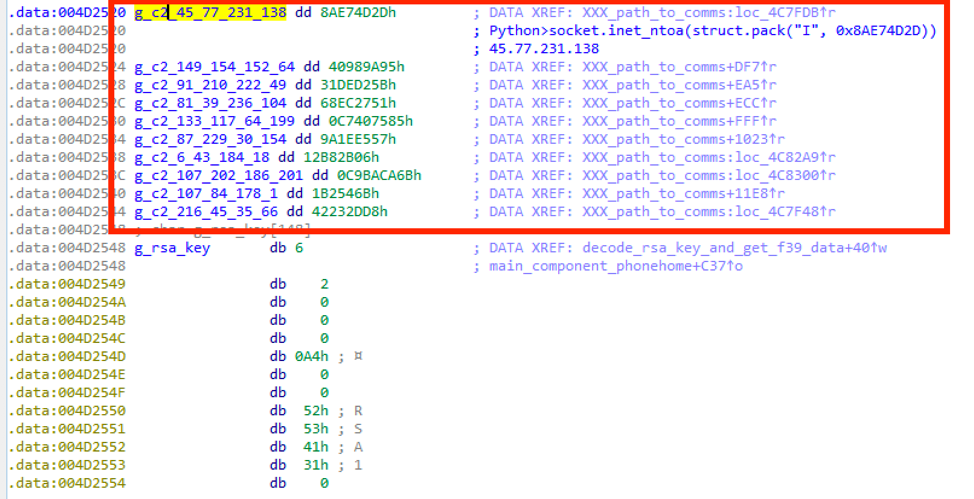
Figure 4: Example of C&C IP addresses in a memory dump of DanaBot’s loader component
Note: Please see the “C&C Infrastructure” section for a potential caveat about these hard-coded IP addresses.
C&C Communications
In the previous versions we analyzed, DanaBot’s loader component used HTTP for communications and its main component used a binary protocol. In version 2.003, both components use a binary protocol over TCP port 443. Despite the port number, it does not use TLS.
The protocol has some quirks, but in general consists of a 183-byte header followed by optional payload data. Most of the header values in a request are echoed back in the response header. If there is payload data, the format depends on the particular command.
Binary Protocol Header
An example of the header is shown in Figure 5.
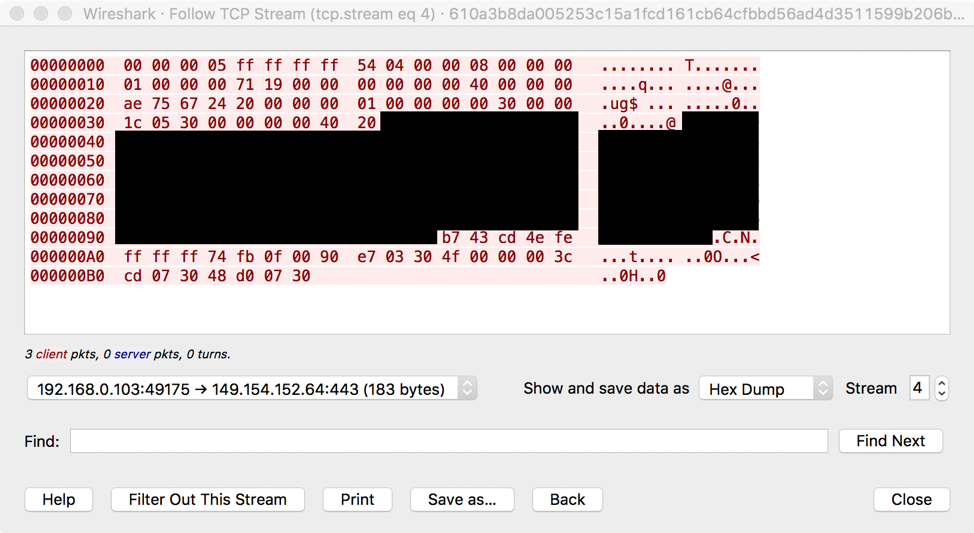
Figure 5: Example 183-byte header used in DanaBot’s binary protocol
It can be broken down into the following fields:
- Offset 0: random values (stack junk) (DWORD)
- Offset 4: hardcoded -1 (DWORD)
- Offset 8: command (DWORD)
- Offset 0xc: affiliate ID (DWORD)
- Offset 0x10: hardcoded 1 (DWORD)
- Offset 0x14: random value based on a linear congruential generator (DWORD)
- Offset 0x18: unknown counter variable (DWORD)
- Offset 0x1c: system architecture (DWORD)
- Offset 0x20: Windows version information (DWORD)
- Offset 0x24: command argument (DWORD)
- Offset 0x28: admin status (DWORD)
- Offset 0x2c: process integrity level (DWORD)
- Offset 0x30: payload length (QWORD)
- Depending on the command, this can contain random values (stack junk) instead
- Offset 0x38: length of next field (BYTE)
- Offset 0x39: bot ID (32 bytes)
- MD5 hex digest of various system information
- Offset 0x59: length of next field (BYTE)
- Offset 0x5a: command-dependent (32 bytes)
- Can be used as part of an encryption key; in this case, it would be the MD5 hex digest of the bot ID (offset 0x39)
- Can be used as a module identifier when requesting a module
- Offset 0x7a: length of next field (BYTE)
- Offset 0x7b: a nonce (32 bytes)
- Offset 0x9b - end of header: random values (stack junk)
Commands
We have identified and analyzed the following commands. The first command is performed by the loader, while the rest are performed by the main component.
Command 0x454 (1108): “Request main component”
This command is used by the loader to request the main component from the C&C server. The command argument (offset 0x24 in the header) will contain the integer “32” or “64” to request either the x86 version or x64 version of the component. The response payload contains encrypted data and an encrypted 128-byte RSA signature block used to verify the data. A decryption key is generated by the CryptDeriveKey Windows API function where it is initialized by taking the MD5 digest of the value at offset 0x5a in the header. Data is AES-256-CBC-encrypted using an initialization vector (IV) of 16 null (\x00) bytes. The decrypted data is the main component DLL which will be executed by rundll32.exe.
Command 0x453 (1107): “Initial beacon”
This is the first command sent by the main component to the C&C server. There is no data in the request or the response, so we believe this is just an initial beacon.
Command 0x44c (1100): “Request module identifiers”
This command is used by the malware to request a list of module identifiers from the C&C server. Figure 6 shows an example response listing these 6 module identifiers:
- 759CBB3E1B883BDCA23E9052462F641E
- E0FBBC92DB9927BFC474A64DF4F9C22F
- D0C851FBCA030928B535FAF3188DAFBA
- A5BBBAB3A17BA2119F47F0E4316EE5BF
- 4F06D71C93E4105307339704D21C49A3
- 8C59B6C9985F983E248E27CC0BF98A2D
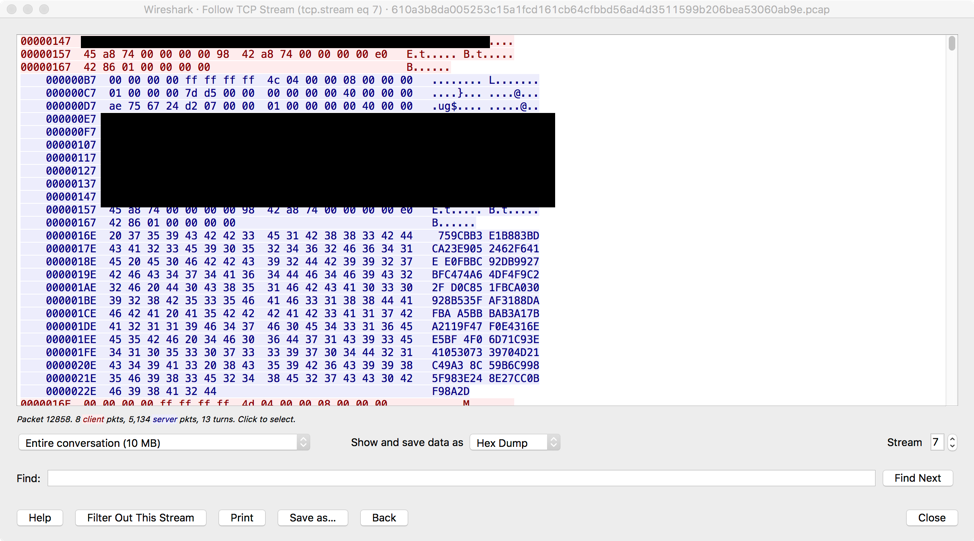
Figure 6: Command 0x44c response payload data containing a list of module identifiers
Command 0x44d (1101): “Request module”
This command is used to request a module from the C&C server. To indicate what module to download, field at offset 0x5a in the header will contain a module identifier (received via command 0x44c). The response payload data will contain a 1699-byte subheader, encrypted data, and a encrypted 128-byte RSA signature block used to verify the data. Figure 7 shows an example subheader:
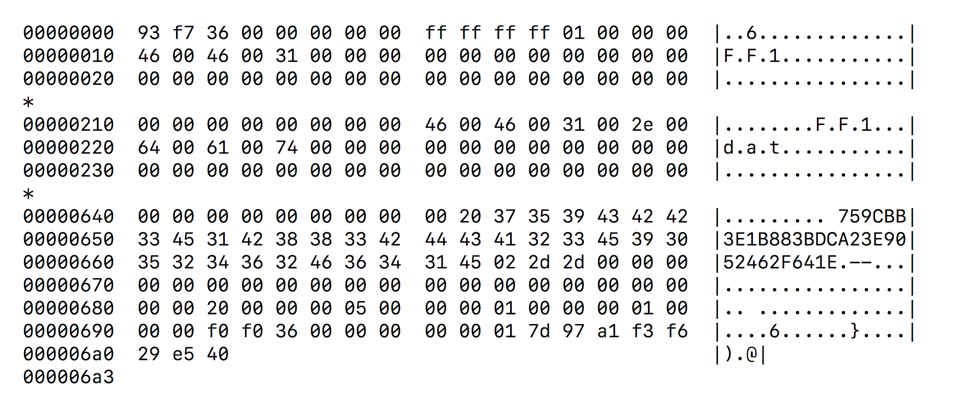
Figure 7: Command 0x44d response payload data containing 1699-byte subheader
The following fields have been identified in this subheader:
- Offset 0: total length of subheader and data (QWORD)
- Offset 8: hardcoded -1 (DWORD)
- Offset 0x10: module name (520-byte wide string)
- Offset 0x218: module filename (520-byte wide string)
- Offset 0x649: length of next field (BYTE)
- Offset 0x64a: module identifier (32 bytes)
- Offset 0x682: module architecture (DWORD)
- Offset 0x686: module type (DWORD)
- Offset 0x68e: data is ZLIB-compressed flag (DWORD)
- Offset 0x692: length of encrypted data (QWORD)
A decryption key (used to decrypt the module) is generated by the CryptDeriveKey Windows API function where it is initialized by the following process:
- Copying the 1699-byte subheader into a buffer and zeroing the following fields:
- Offset 0: total length of subheader and data (QWORD)
- Offset 0x692: length of encrypted data (QWORD)
- The buffer is MD5 hashed
- The uppercase hex digest of the hash is itself MD5 hashed
Data is AES-256-CBC-encrypted using an initialization vector (IV) of 16 null (\x00) bytes. The decrypted data is optionally ZLIB compressed and once decompressed contains a module DLL that will be executed by rundll32.exe
Table 1: List of modules typically seen
|
Module identifier |
Name |
Old name |
Functionality |
|
759CBB3E1B883BDCA23E9052462F641E |
FF1 |
Sniffer |
Proxy |
|
E0FBBC92DB9927BFC474A64DF4F9C22F |
FF2 |
Stealer |
Stealer module |
|
D0C851FBCA030928B535FAF3188DAFBA |
FF3 |
NA |
64-bit version of Stealer module (new) |
|
8C59B6C9985F983E248E27CC0BF98A2D |
FF4 |
NA |
RDP module (new) |
|
A5BBBAB3A17BA2119F47F0E4316EE5BF |
FF5 |
TOR |
TOR proxy |
|
4F06D71C93E4105307339704D21C49A3 |
FF6 |
VNC |
VNC |
Command 0x44f (1103): “Get configuration files”
This command is used by the malware to request configuration files from the C&C. It has a quirk where after the malware receives the 183-byte response header, the malware sends “\xff\xff\xff\xff\xff\xff\xff\xff” before the C&C server responds with the response payload data. The payload data is formatted and encrypted like a module, but multiple configuration files are sent (multiple 1699-byte subheader, encrypted data, and signature packages).
Table 2: Configuration files typically seen
|
Config filename |
Variants |
Purpose |
Comments |
|
BitVideo |
VVie |
Processes to watch |
For screenshots/video recording perhaps |
|
KeyBit |
BitKey, VKey |
Processes to watch |
For keylogging possibly |
|
BitFiles |
Vfiles, VBit |
Cryptocurrency wallet files to steal |
|
|
PosWtFilter |
PostWFilter, VFilter |
List of websites for which to steal requests |
PosWtFilter may be a typo (in affiliate IDs 3 and 9) |
|
webinj33 |
uabanks |
Proxying config |
Incrementing versions |
|
inj25 |
InjectZZ, InjectSW |
Webinjects |
Incrementing versions; Zeus-style injects |
This command is used by the malware to send data to the C&C such as the system information (Figure 3 above) or a screenshot. The request payload data contains a 656-byte subheader, encrypted data, and encrypted session key (Figure 8 shows an example subheader):Command 0x44e (1102): “Send data to C&C”
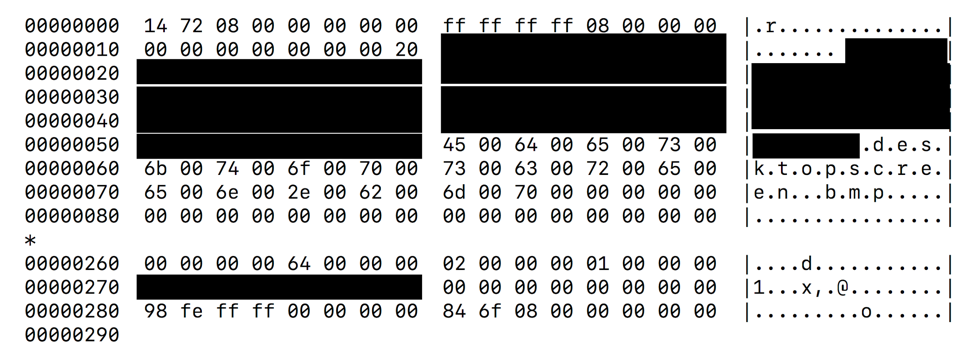
Figure 8: Command 0x44e request payload data containing 656-byte subheader
The following fields have been identified in the subheader:
- Offset 0: total length (QWORD)
- Offset 8: hardcoded -1 (DWORD)
- Offset 0xc: affiliate ID (DWORD)
- Offset 0x17: length of next field (BYTE)
- Offset 0x18: bot ID (32 bytes)
- Offset 0x38: length of next field (BYTE)
- Offset 0x39: MD5 hex digest of plaintext data (32 bytes)
- Offset 0x5a: filename (520-byte wide string)
- Offset 0x264: data type (DWORD)
- Offset 0x270: system time (unknown format) (QWORD)
- Offset 0x280: timezone bias (DWORD)
- Offset 0x288: encrypted data length (QWORD)
Data can be ZLIB-compressed and AES-256-CBC-encrypted using an initialization vector (IV) of 16 null (\x00) bytes. The encryption key is generated using the CryptDeriveKey Windows function and RSA-encrypted using an embedded RSA public key. The RSA-encrypted AES key is then appended to the end of the encrypted data.
Table 3: Files typically seen sent
|
Filename |
Comments
|
|
desktopscreen.bmp |
Screenshot |
|
Cookies.txt |
Stored web browser cookies |
|
“System Info" |
Various system information |
C&C Infrastructure
While we do not have specific visibility into DanaBot’s back-end infrastructure, we have observed some noteworthy behavior that allows some speculation.
As noted above, DanaBot uses a loader to download its main component from a C&C server. The main component contains a list of 10 hardcoded C&C IP addresses that are used for malware communications. Our first observation was that the hardcoded C&C lists changed approximately every hour when a main component was downloaded. We downloaded the main component in hourly intervals for 24 hours and analyzed the C&C lists. Each sample’s list turned out to be different. Overall we ended up with 240 IP addresses (available on Github [13]) with 194 (80%) of them being unique. The top 10 overlapping IPs were:
- 158.255.215[.]31 (in 7 lists)
- 149.154.152[.]64 (in 7 lists)
- 37.235.53[.]232 (in 6 lists)
- 95.179.151[.]252 (in 5 lists)
- 178.209.51[.]227 (in 5 lists)
- 149.154.157[.]220 (in 5 lists)
- 45.77.54[.]180 (in 4 lists)
- 45.77.96[.]198 (in 3 lists)
- 45.77.51[.]69 (in 3 lists)
- 45.77.231[.]138 (in 3 lists)
Out of the total list of possible C&C IPs, only the following 10 (4%) seemed responsive:
- 149.154.152[.]64
- 149.154.157[.]220
- 158.255.215[.]31
- 178.209.51[.]227
- 37.235.53[.]232
- 45.77.231[.]138
- 45.77.51[.]69
- 45.77.54[.]180
- 45.77.96[.]198
- 95.179.151[.]252
Interestingly, these synced up with the overlapping IP list. We also noted that the overall IP list contained some unrouteable IPs such as:
- 10.181.255[.]78
- 225.100.146[.]224
- 225.21.55[.]173
- 226.181.243[.]104
- 228.226.171[.]37
- 234.106.187[.]114
- 234.63.249[.]87
- 234.97.12[.]178
- 235.40.105[.]171
- 238.87.111[.]55
As a result of these observations, we can speculate that the main component may contain only a few real C&Cs while the rest are random decoys.
Affiliate System
Based on distribution methods and targeting, we have been grouping DanaBot activity using an “affiliate ID” that we have observed in various part of the C&C protocol (e.g., offset 0xc of the 183-byte binary protocol header). At the time of publication, we observed the following affiliate IDs:
|
Affiliate ID |
Targeting |
Distribution |
|
3 |
Poland, Austria, Germany, Italy |
Zipped-VBS attachments in email campaigns |
|
4 |
Australia |
Links in email campaigns |
|
5 |
No webinjects |
unknown |
|
8 |
UK, Ukraine, and Canada |
Various email campaigns |
|
9 |
Same as affiliate ID 3 |
Fallout Exploit Kit |
|
11 |
US, No webinjects |
Hancitor downloader malware from links in email campaigns |
|
12 |
Australia |
unknown |
|
13 |
Germany |
unknown |
|
20 |
No webinjects |
unknown |
We observed that DanaBot samples with different affiliate IDs seem to use some of the same C&C IP addresses. At this point we speculate that DanaBot may be set up as a “malware as a service” system in which one threat actor controls a global C&C panel and infrastructure system and then sells access to other threat actors (affiliates) who distribute and target DanaBot as they see fit.
Comparison with CryptXXX Ransomware
Proofpoint blogged about CryptXXX file-encrypting ransomware in 2016 [5] and noted that it shared many similarities with Reveton “police” ransomware. In particular, we noted that it was written in Delphi and used a custom command and control protocol on TCP port 443.
DanaBot’s C&C traffic appears to be an evolution of this protocol, now using AES encryption in addition to the Zlib compression. For example, in the traffic included in the Malware Traffic Analysis blog [6], the initial CryptXXX checkin format is:

Figure 9: CryptXXX checkin format
The following fields are among those common to both CryptXXX and DanaBot:
- Offset 0: length of next field (BYTE)
- Offset 2: bot ID (32 bytes)
- Offset 0x34 : length of compressed buffer
- Offset 0x38: Zlib-compressed buffer (0x4e bytes)
The compressed buffer decodes to:
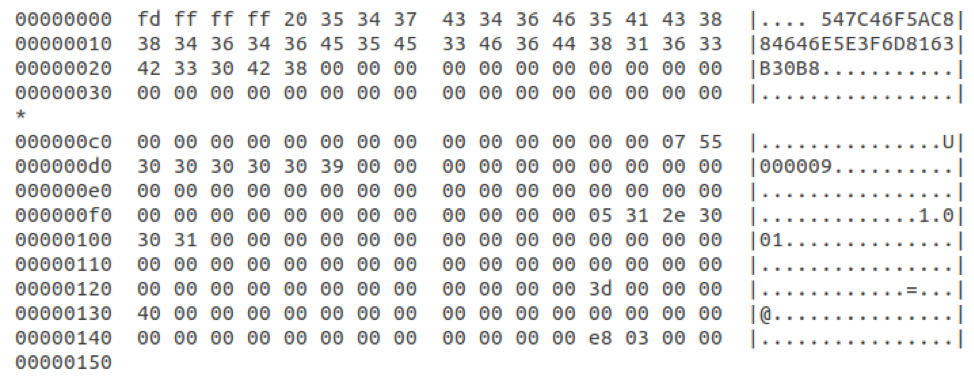
Figure 10: Decoded payload buffer
The following fields have been identified in the decoded buffer:
- Offset 4: length of next field (BYTE)
- Offset 5: bot ID (32 bytes)
- Offset 0xce : length of next field (BYTE)
- Offset 0xcf : Affiliate ID (7 bytes)
- Offset 0xfc : length of next field (BYTE)
- Offset 0xfd : Version string (5 bytes)
- etc
Later on in the communication there is a (decoded) request to download a “Stealer” module “stiller.dll”:
Figure 11: Decoded request to download the “Stealer” module\
Thus it would seem that Danabot follows in a long line of malware from one particular group. This family began with ransomware, to which stealer functionality was added in Reveton. The evolution continued with CryptXXX ransomware and now with a banking Trojan with Stealer and remote access functionality added in Danabot.
Conclusion
When we first discovered DanaBot, we predicted that it would likely be picked up by other actors. Distribution of this malware has now extended well beyond Australia, with campaigns targeting Poland, Italy, Germany, Austria, and, more recently, the United States. DanaBot is a banking Trojan, meaning that it is necessarily geo-targeted to a degree. Adoption by high-volume actors, though, as we saw in the US campaign, suggests active development, geographic expansion, and ongoing threat actor interest in the malware. The malware itself contains a number of anti-analysis features, as well as updated stealer and remote control modules, further increasing its attractiveness and utility to threat actors.
References
[1] https://www.proofpoint.com/us/threat-insight/post/danabot-new-banking-trojan-surfaces-down-under-0
[2] https://www.welivesecurity.com/2018/09/21/danabot-targeting-europe-adds-new-features/
[3] https://www.proofpoint.com/us/threat-insight/post/hancitor-ruckguv-reappear
[4] https://0ffset.wordpress.com/2018/08/12/post-0x16-hancitor-stage-1/
[6] http://malware-traffic-analysis.net/2016/04/20/index.html
[7] https://github.com/EmergingThreats/threatresearch/blob/master/danabot/func_hashes.py
[8] https://github.com/EmergingThreats/threatresearch/blob/master/danabot/loader_func_hashes.txt
[9] https://github.com/EmergingThreats/threatresearch/blob/master/danabot/main_func_hashes.txt
[10] https://github.com/EmergingThreats/threatresearch/blob/master/danabot/decrypt_str_ida.py
[11] https://github.com/EmergingThreats/threatresearch/blob/master/danabot/loader_strings.txt
[12] https://github.com/EmergingThreats/threatresearch/blob/master/danabot/main_strings.txt
[13] https://github.com/EmergingThreats/threatresearch/blob/master/danabot/24_hours_of_ips.txt
Indicators of Compromise (IOCs)
|
IOC |
IOC Type |
Description |
|
288615e28672e1326231186230f2bc74ea84191745cc40369d49bf385bf9669b |
SHA256 |
DanaBot Loader (affiliate ID 8) |
|
45.77.96.198 |
IP Address |
DanaBot Loader C&C |
|
57cac2bdc44415c6737149bda8fc4e53adfab7d35cac3de94ced9d6675f1c5db |
SHA256 |
DanaBot Main x64 (affiliate ID 8) |
|
1184c7936c82f1718f9e547be4a8eeaa1c16c2f16790e2b5ae66a870a17b7454 |
SHA256 |
DanaBot Main x86 (affiliate ID 8) |
|
149.154.152.64 |
IP Address |
DanaBot Main C&C |
|
149.154.157.220 |
IP Address |
DanaBot Main C&C |
|
158.255.215.31 |
IP Address |
DanaBot Main C&C |
|
178.209.51.227 |
IP Address |
DanaBot Main C&C |
|
37.235.53.232 |
IP Address |
DanaBot Main C&C |
|
45.77.231.138 |
IP Address |
DanaBot Main C&C |
|
45.77.51.69 |
IP Address |
DanaBot Main C&C |
|
45.77.54.180 |
IP Address |
DanaBot Main C&C |
|
45.77.96.198 |
IP Address |
DanaBot Main C&C |
|
|
|
|
|
Hancitor Campaign IOCs: |
|
|
|
genesislouisville[.]com |
Domain |
Link to macro document |
|
genesisofdallas[.]com |
Domain |
Link to macro document |
|
genesisoflouisville[.]com |
Domain |
Link to macro document |
|
genesisofportland[.]com |
Domain |
Link to macro document |
|
kccmanufacturing[.]com |
Domain |
Link to macro document |
|
louisvillegenesis[.]com |
Domain |
Link to macro document |
|
louisvilleride[.]com |
Domain |
Link to macro document |
|
motionscent[.]com |
Domain |
Link to macro document |
|
oxmoorautomall[.]com |
Domain |
Link to macro document |
|
ridesharelouisville[.]com |
Domain |
Link to macro document |
|
6dcf41dd62e909876e9ef10bd376ea3a6765c2ecb281844fc4bebd70bfebeb27 |
SHA256 |
Macro document |
|
c82081823ba468ad2d10c4beca700a7bf0ba82b371bc57286cc721e271019080 |
SHA256 |
Hancitor |
|
hxxp://tontheckcatan[.]ru/4/forum[.]php |
URL |
Hancitor C&C |
|
hxxp://onthethatsed[.]ru/4/forum[.]php |
URL |
Hancitor C&C |
|
hxxp://kitezona[.]ru/wp-content/plugins/redirection/modules/1 |
URL |
Hancitor Task |
|
hxxp://xn--hllo-bpa[.]com/guestlist/1 |
URL |
Hancitor Task |
|
hxxp://music-open[.]com/1 |
URL |
Hancitor Task |
|
hxxp://allnicolerichie[.]com/wp-content/plugins/ubh/1 |
URL |
Hancitor Task |
|
hxxp://mpressmedia[.]net/wp-content/plugins/ubh/1 |
URL |
Hancitor Task |
|
hxxp://bwc[.]ianbell[.]com/wp-content/plugins/ubh/1 |
URL |
Hancitor Task |
|
hxxp://kitezona[.]ru/wp-content/plugins/redirection/modules/2 |
URL |
Hancitor Task |
|
hxxp://xn--hllo-bpa[.]com/guestlist/2 |
URL |
Hancitor Task |
|
hxxp://music-open[.]com/2 |
URL |
Hancitor Task |
|
hxxp://allnicolerichie[.]com/wp-content/plugins/ubh/2 |
URL |
Hancitor Task |
|
hxxp://mpressmedia[.]net/wp-content/plugins/ubh/2 |
URL |
Hancitor Task |
|
hxxp://bwc[.]ianbell[.]com/wp-content/plugins/ubh/2 |
URL |
Hancitor Task |
|
hxxp://kitezona[.]ru/wp-content/plugins/redirection/modules/4 |
URL |
Hancitor Task |
|
hxxp://xn--hllo-bpa[.]com/guestlist/4 |
URL |
Hancitor Task |
|
hxxp://music-open[.]com/4 |
URL |
Hancitor Task |
|
hxxp://allnicolerichie[.]com/wp-content/plugins/ubh/4 |
URL |
Hancitor Task |
|
hxxp://mpressmedia[.]net/wp-content/plugins/ubh/4 |
URL |
Hancitor Task |
|
hxxp://bwc[.]ianbell[.]com/wp-content/plugins/ubh/4 |
URL |
Hancitor Task |
|
9a816d9626f870617400df384d653b02a15ad940701b4fb2296e1abe04d3777f |
SHA256 |
DanaBot |
|
hxxp://tontheckcatan[.]ru/mlu/forum[.]php |
URL |
Pony C&C |
|
hxxp://onthethatsed[.]ru/mlu/forum[.]php |
URL |
Pony C&C |
|
hxxp://tontheckcatan[.]ru/d2/about[.]php |
URL |
Pony C&C |
|
hxxp://onthethatsed[.]ru/d2/about[.]php |
URL |
Pony C&C |
ET and ETPRO Suricata/Snort Signatures
2819978 | ETPRO TROJAN Tordal/Hancitor/Chanitor Checkin
2014411 | ET TROJAN Fareit/Pony Downloader Checkin 2
2831891 | ETPRO CURRENT_EVENTS Hancitor Encrypted Payload Jul 19
2832816 | ETPRO TROJAN Win32/DanaBot CnC Checkin (affid 11)

